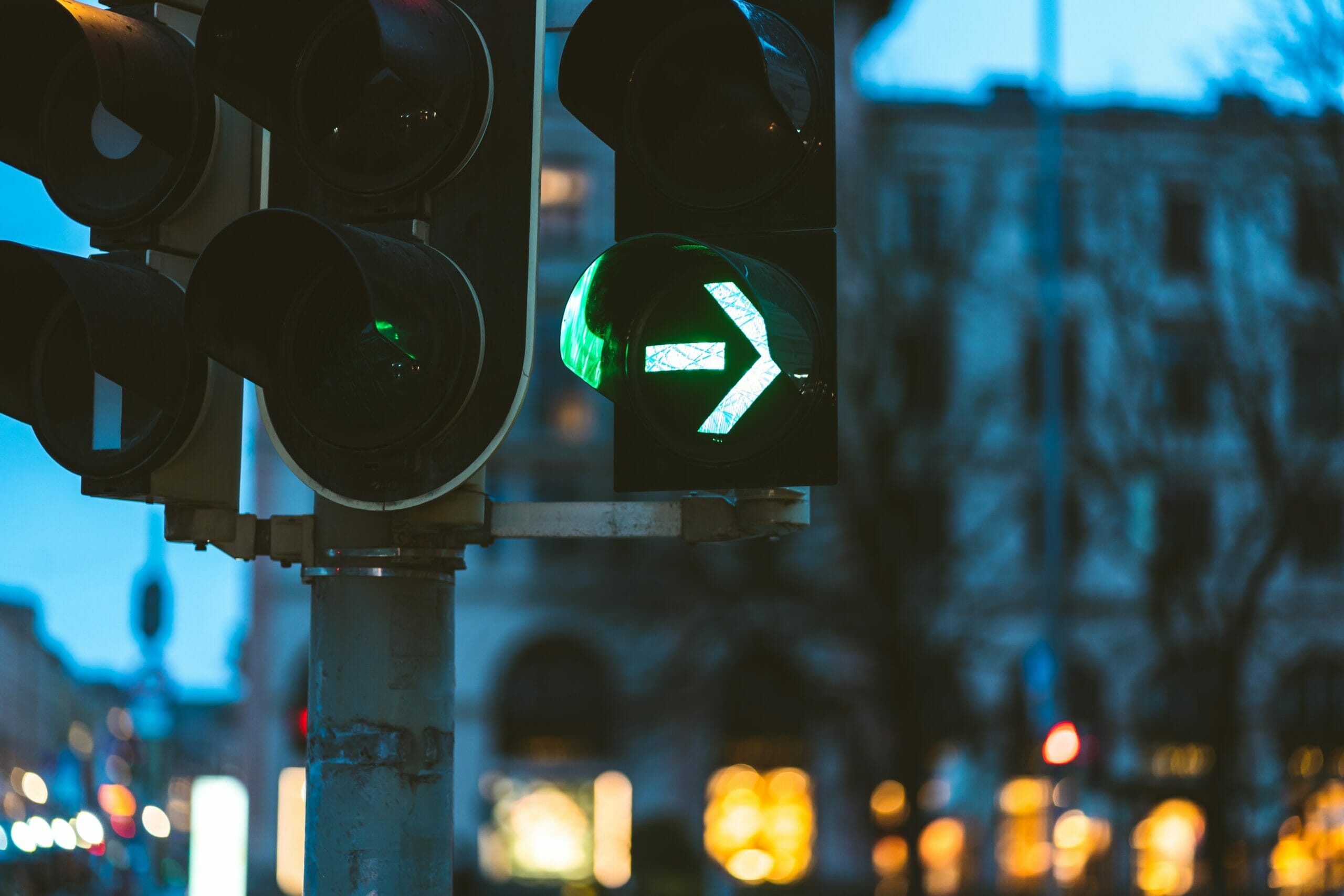You’ve been seeing them your whole life and understand the basic principles, but they will still be one of the first obstacles you face.
A simple sequence to understand, but important that you react to them appropriately if you want to ace both your theory and practical driving tests.
Failing to understand them fully can also cause an accident.
What are traffic lights?
Traffic lights can be sets of two, or usually three lights that indicate when it is safe for you to cross the path of other road users.
In the UK, they consist of three different colours – red, amber and green, and work in a 4-phase sequence.
The sequence is as follows:
- Red – stop
- Red & amber – prepare to go
- Green – go, if the road ahead is clear
- Amber – stop if it is safe to do so.
Traffic light colours explained
Red
If there is just a red light displayed, road users should stop behind the line in front of the light. This also applies to cyclists and it is illegal to pass. If caught going through a red light by a police officer or traffic light camera, you could be facing a fine and 3-points on your license.
Red & amber
This combination indicates that the lights will soon be changing to green and that you can prepare to continue your journey.
You can re-initiate your engine and release your handbrakes, but not go until the light has turned green.
Green
When the green light is illuminated, it’s safe to go as soon as the road is clear of any potential traffic buildup.
Amber
When the amber light is illuminated alone, you must stop if it is safe to do so.
If it turns amber as you are immediately approaching, you can continue through, but if you have enough time to safely come to a complete stop, you must do so.
Do not make a habit of speeding up to get through before it turns red, as you will eventually get caught out and break the law.
Traffic light stop lines
All permanently fixed traffic lights have a line in front of them that signifies where you should stop.
Behind the line, you may find arrows pointing the direction each lane leads to in order to help you and prevent congestion after the lights.
There may also be arrows on the lights themselves indicating to certain lanes that they can go.
Filter traffic lights
These lights indicate which road users have priority.
Often found in congestion prone areas, you’ll see variations with arrows pointing left, right and straight ahead.
These work the same as normal traffic lights, so If your light is green, you may proceed. If red, wait.
Tips for your test
Try to anticipate when the lights may be about to change. If they’ve been green for as long as you’ve been able to see them, they’re probably about to change.
Do not make a habit of trying to beat the lights when they turn orange. Slow down and come to a safe stop.
WeTrust is a nationwide community of hand-picked, trusted driving instructors. Book your first lesson with WeTrust Driving Lessons now.


